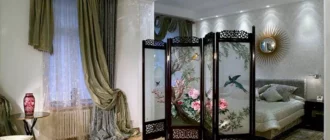
Antique style in the interior a luxurious and comfortable environment with a touch of sophisticated antiquity
The antique style in the interior is a variant of the interior decoration of the premises, which successfully combines harmony, grace and pomp. Having absorbed the cultural and architectural traditions of Ancient Greece and Rome, the noble antique style is still in demand in the field of interior design. For several millennia, it remains the standard of excellence and does not go out of fashion.
The antique style in the interior has repeatedly served as a unique source of inspiration for the formation of other European design trends, including the Renaissance and Neoclassicism. It surprisingly intertwines beauty with functionality, and comfort with refined luxury and the charm of antiquity.
The antique style in the interior is easy to distinguish from other design directions by its numerous characteristic features. The ancient Greeks and Romans sought to equip their homes not only on a grand scale, but also with exquisite taste, using the achievements of science and cultural traditions.

The main features of this style include:
- Scale. This style is ideal for spacious rooms with high ceilings, where there is enough room for massive interior elements and creative ideas.
- The predominance of natural materials in the decoration. Most often, wood, natural stone and ceramics are used for these purposes.
- An abundance of characteristic architectural elements. In addition to classic columns, porticoes, arches, coffered ceilings with recesses of the correct geometric shape look harmonious in the interior.
- Discreet wall decoration. They are painted in warm monochromatic colors or covered with decorative plaster. The joints with the ceiling are often decorated with rich plaster stucco. Fresco paintings with floral ornaments are also often found on the walls.
- Large windows with minimal drapery. Instead of heavy curtains and drapes, light translucent tulle curtains are used.
- Tile or porcelain stoneware floors. Much less often in the premises there is inlaid parquet covered with a carpet with a strict geometric pattern.
- Moderate amount of decor. Ceramic vases and figurines are placed in the recesses of the walls; textiles are selected only from natural materials (linen or wool).
- Original lighting. Sources of artificial light are wall sconces in the form of torches and decorative table candelabra, and miniature spotlights are installed in the ceiling.

The correct selection of antique furniture also plays an important role.
In Ancient Greece and Rome, there were no cabinets familiar to a modern person; they appeared much later, already in medieval Europe. Therefore, for storing things in the premises, artificially aged chests of drawers, curbstones and chests, decorated with carvings or inlays, are installed. Tables, benches and chairs made of wood should be simple in shape.

History of antique style in the interior
The history of antique style in the interior is more than 2500 years old. The ancient Greeks were the first in Europe to develop the concept of planning a single interior with a large number of rooms for different purposes. They were characterized by the asceticism of the dwelling with a minimum of furnishings and an abundance of space.
The Romans borrowed an original idea from the Greeks and supplemented it with their own developments. They began to use arches and domed ceilings, and more furniture and luxury items appeared in the premises. After the fall of the Roman Empire at the end of the 5th century, the antique style of interior in Europe practically ceased to exist for many centuries. Only in the Renaissance era, in all spheres of art, interest in the cultural traditions of the ancient Greeks and Romans was renewed, and after a long break, the features of antiquity began to appear in the design of the premises.

In the middle of the 17th century, large-scale excavations of the ancient city of Pompeii, destroyed by the eruption of Vesuvius, began in Italy.
Unique examples of Roman architecture, the remains of furnishings, and works of art were found under a layer of ash. This served as a powerful impetus for the formation of a new direction in various areas of art classicism. Its basis in interior design was the antique style, from which arches and rectangular shapes, symmetrical compositions and spacious layouts were borrowed.
In the middle of the 19th century, many features of the antique style in the interior were embodied in neoclassicism, which briefly became popular in Europe and the USA. But very soon it was replaced by eclecticism and new revolutionary trends in interior design.

Today, the antique style has many followers in various parts of the world. He is loved and appreciated by rich people, world celebrities and big politicians. Therefore, the number of those wishing to decorate the interior of their home in the spirit of the ancient Romans and Greeks always remains very impressive.
Antique style in the interior photo


















